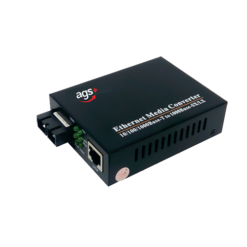Uncategorized
What Is Media Converter? 2024
What Is Media Converter
A media converter is a networking device that enables the connectivity between different types of communication media, typically in the context of network infrastructure. Its primary function is to convert the electrical or optical signals from one type of cable or network interface to another. This is useful when integrating various networking technologies, allowing them to work together seamlessly.
Here are the main points about media converters:
What Is Media Converter
1. Media Types:
- Fiber to Copper: Converts signals between fiber optic and copper cabling (e.g., from a fiber optic connection to an Ethernet connection).
- Copper to Copper: Converts between different copper cable types or Ethernet speeds (e.g., from one type of Ethernet cable to another or from a Fast Ethernet connection to a Gigabit Ethernet connection).
2. Purpose:
- Extend Network Reach: Media converters can extend the reach of a network by converting signals between fiber optics and copper cables, allowing data to travel longer distances without signal degradation.
- Integrate Different Technologies: Useful for integrating older networking equipment with newer technologies or connecting devices with different interface types.
3. Types of Media Converters:
- Stand-Alone Media Converters: Independent devices that are placed between two network devices with different media types.
- Chassis-Based Media Converters: These can be installed in a modular chassis that allows for multiple media converters to be housed in a single unit. This provides scalability and ease of management.
4. Fiber Optic Media Converters:
- Convert signals between copper Ethernet and fiber optic connections.
- Can support various types of fiber optic cables, such as single-mode or multimode, and different connectors like SC, ST, or LC.
5. Copper Media Converters:
What Is Media Converter
- Convert signals between different types of copper cables or Ethernet speeds.
- Can be used to upgrade network speeds or connect devices with different Ethernet interfaces.
What Is Media Converter
6. Power over Ethernet (PoE) Media Converters:
- Some media converters support Power over Ethernet, allowing both data and electrical power to be transmitted over the same cable.
7. Application Scenarios:
What Is Media Converter
- Telecommunications Networks: Useful for integrating different communication technologies within a telecommunications infrastructure.
- Enterprise Networks: Commonly used to extend the reach of networks or connect devices with different media types.
- Industrial Environments: Applied in industrial settings to connect devices in harsh environments.
8. Benefits:
- Interoperability: Enables the integration of diverse networking technologies.
- Flexibility: Provides flexibility in designing and expanding network infrastructure.
- Cost-Effective: Can be a cost-effective solution compared to replacing entire network components.
9. Considerations:
- Data Rate: Ensure that the media converter supports the required data rate for the network.
- Distance: Check the maximum distance the media converter can support for reliable signal transmission.
Media converters play a vital role in maintaining connectivity and ensuring the smooth operation of networks with diverse hardware components and media types.




